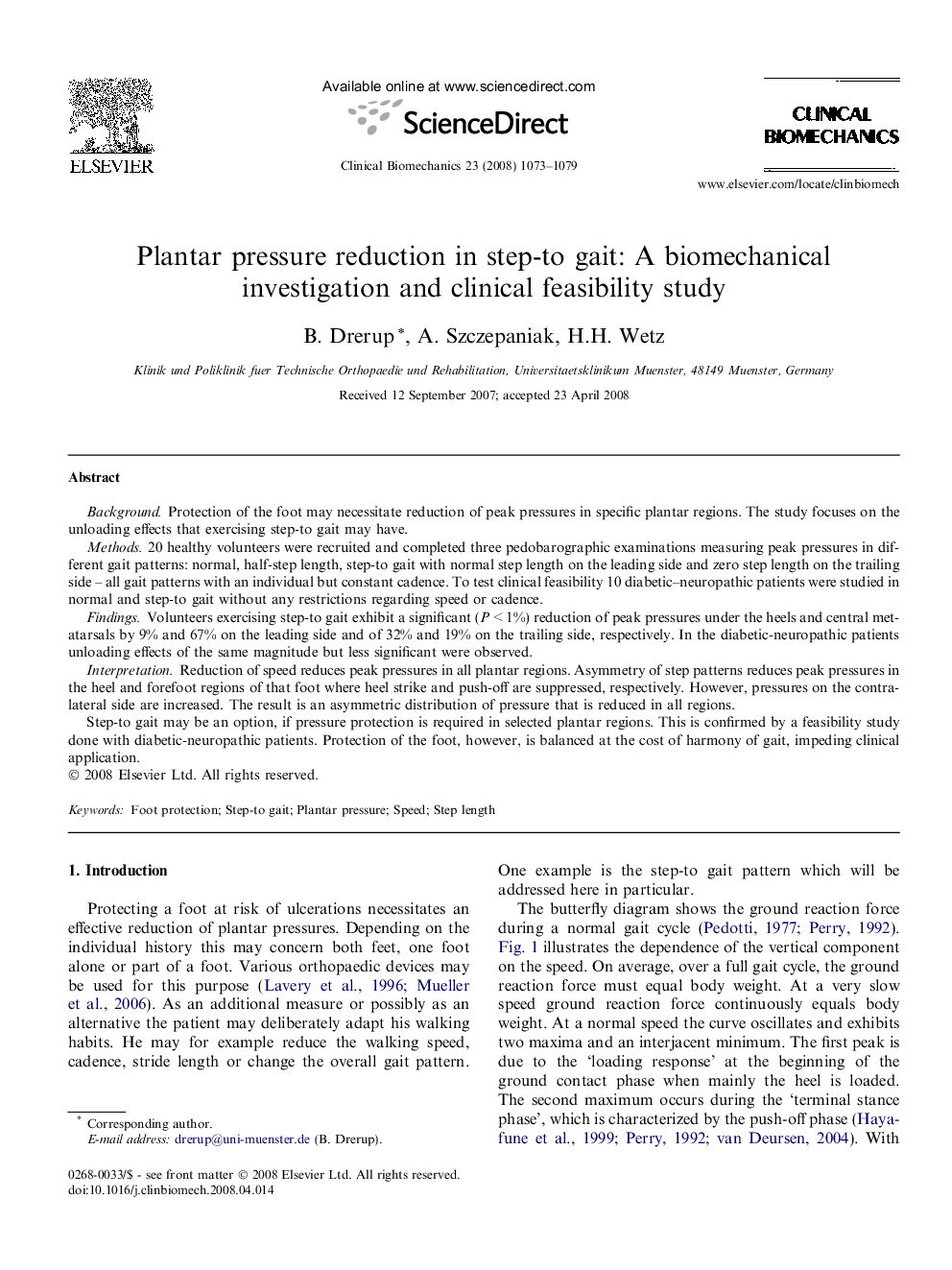| Article ID | Journal | Published Year | Pages | File Type |
|---|---|---|---|---|
| 4051071 | Clinical Biomechanics | 2008 | 7 Pages |
BackgroundProtection of the foot may necessitate reduction of peak pressures in specific plantar regions. The study focuses on the unloading effects that exercising step-to gait may have.Methods20 healthy volunteers were recruited and completed three pedobarographic examinations measuring peak pressures in different gait patterns: normal, half-step length, step-to gait with normal step length on the leading side and zero step length on the trailing side – all gait patterns with an individual but constant cadence. To test clinical feasibility 10 diabetic–neuropathic patients were studied in normal and step-to gait without any restrictions regarding speed or cadence.FindingsVolunteers exercising step-to gait exhibit a significant (P < 1%) reduction of peak pressures under the heels and central metatarsals by 9% and 67% on the leading side and of 32% and 19% on the trailing side, respectively. In the diabetic-neuropathic patients unloading effects of the same magnitude but less significant were observed.InterpretationReduction of speed reduces peak pressures in all plantar regions. Asymmetry of step patterns reduces peak pressures in the heel and forefoot regions of that foot where heel strike and push-off are suppressed, respectively. However, pressures on the contralateral side are increased. The result is an asymmetric distribution of pressure that is reduced in all regions.Step-to gait may be an option, if pressure protection is required in selected plantar regions. This is confirmed by a feasibility study done with diabetic-neuropathic patients. Protection of the foot, however, is balanced at the cost of harmony of gait, impeding clinical application.
